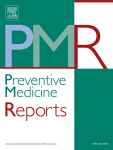|
Authors
De Oliveira, Camila Maciel; Pavani, Jessica; Liu, Chunyu; de Oliveira Alvim, Rafael; Balcells, Mercedes ; Mourao-Junior, Carlos Alberto; Krieger, José Eduardo; da Costa Pereira, Alexandre ; Mourao-Junior, Carlos Alberto; Krieger, José Eduardo; da Costa Pereira, Alexandre
|
Abstract
Considering that the incidence of type 2 diabetes mellitus (T2DM) has been increasing especially in developing countries and becoming a global public health problem, this study aims to evaluate the association between triglyceride glucose index (TyG) – which is a mathematical product of the fasting blood glucose and triglyceride levels – and incident T2DM in an adult sample in the Baependi Heart Study (BHS).
The data were from the BHS cohort consisting of two periods: cycle 1 (2005–2006; n = 1712; 119 families) and cycle 2 (2010–2013; n = 3017; 127 families). A total of 1121 individuals (both sexes, 18–100 years) were selected if they were assessed in both cycles and not diagnosed with T2DM at baseline (cycle 1).
Our findings showed that a participant’s risk of developing T2DM increased almost 10 times for a one-unit increase in the TyG (odds ratio OR = 10.17, 95% CI, 7.51–13.93). The association when stratified by age was OR = 28.13 [95% CI, 14.03–56.41] for young adults, meaning that the risk of developing T2DM increased more than 28 times for a one-unit increase in the TyG. For the other groups, young middle-aged adults, old middle-aged adults, and seniors, we found OR = 4.84 [95% CI, 2.91–8.06], OR = 28.73 [95% CI, 10.63–77.65, and OR = 9.88 [95% CI, 3.16–30.90], respectively.
A higher TyG implies a significant increase in the risk of developing T2DM, which could be an important screening tool to target early lifestyle intervention in Brazil.
|

Scopus
Altmetrics

|
